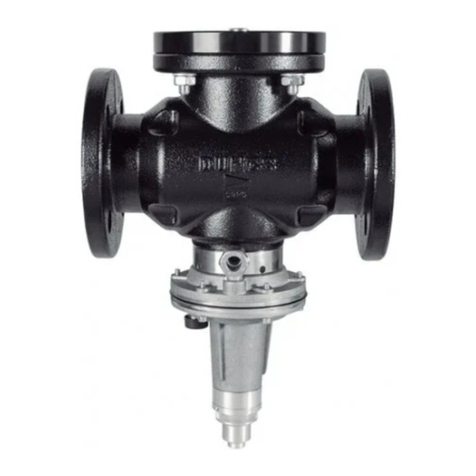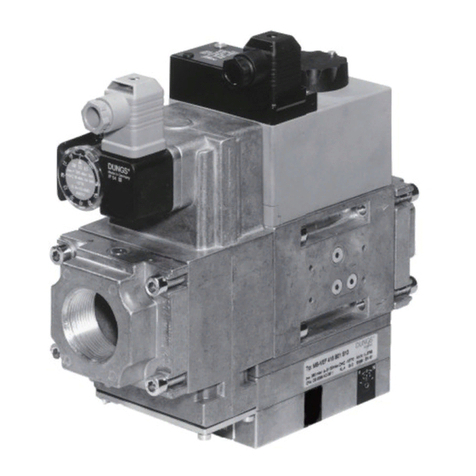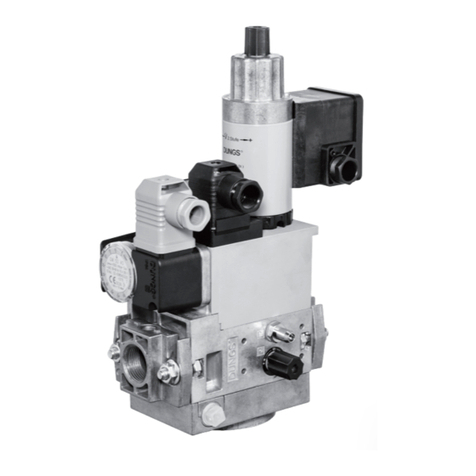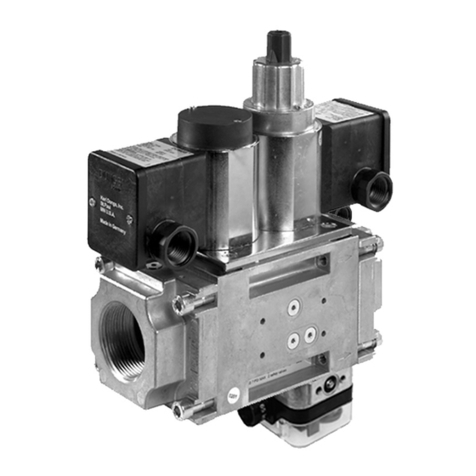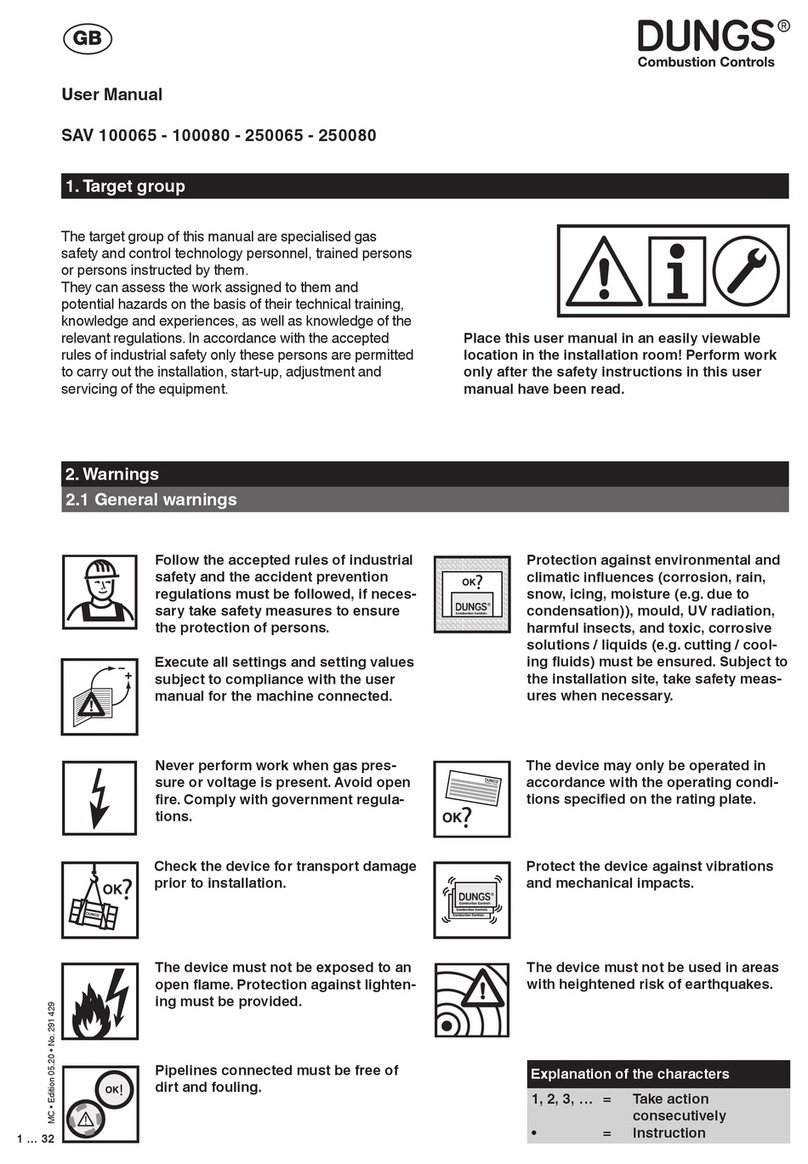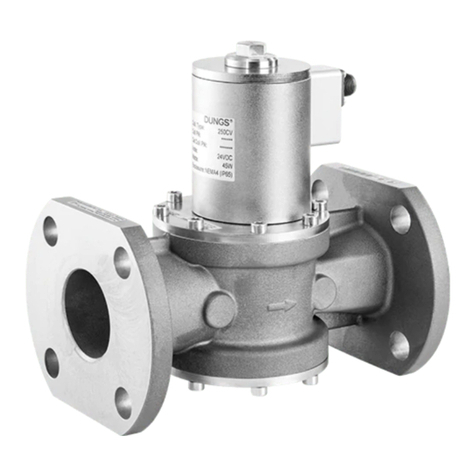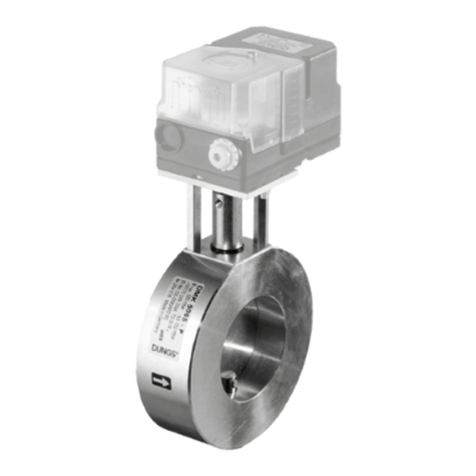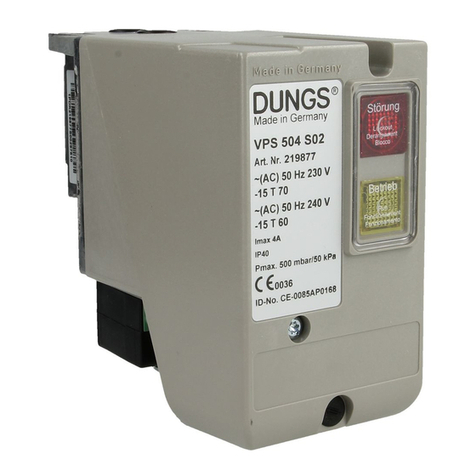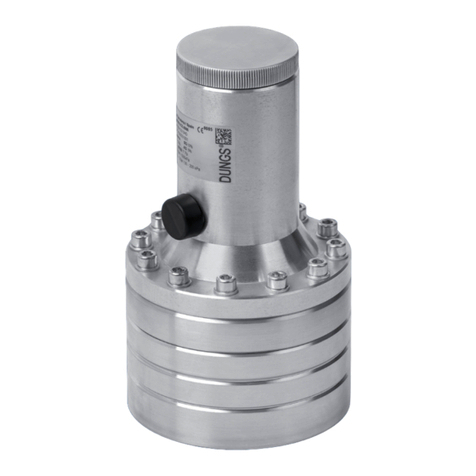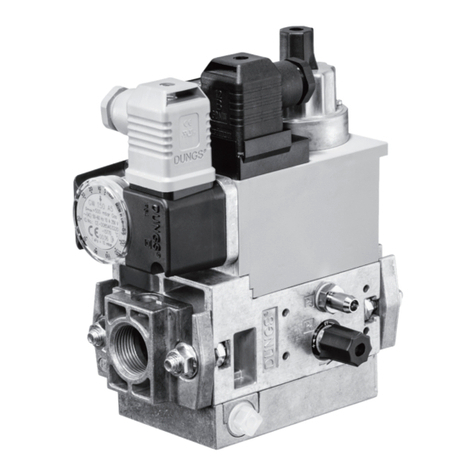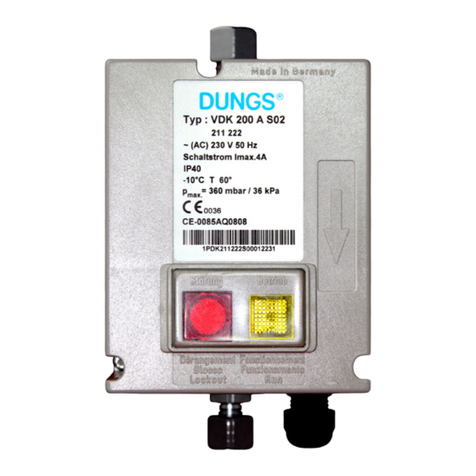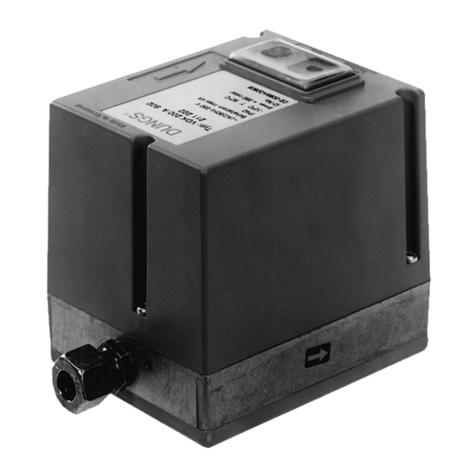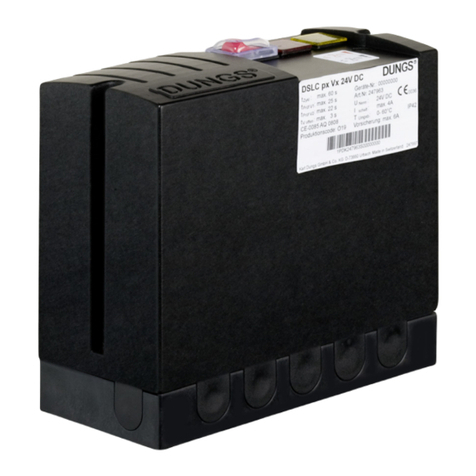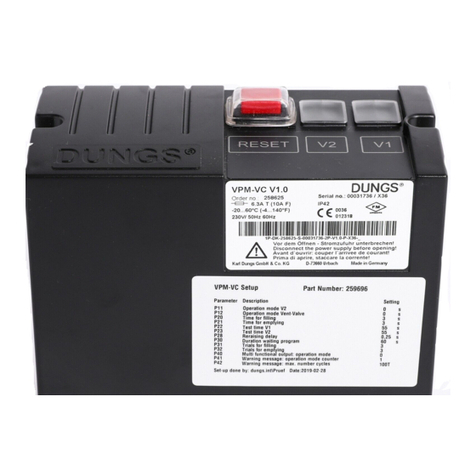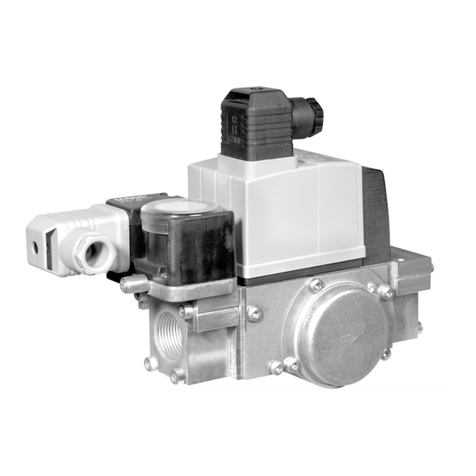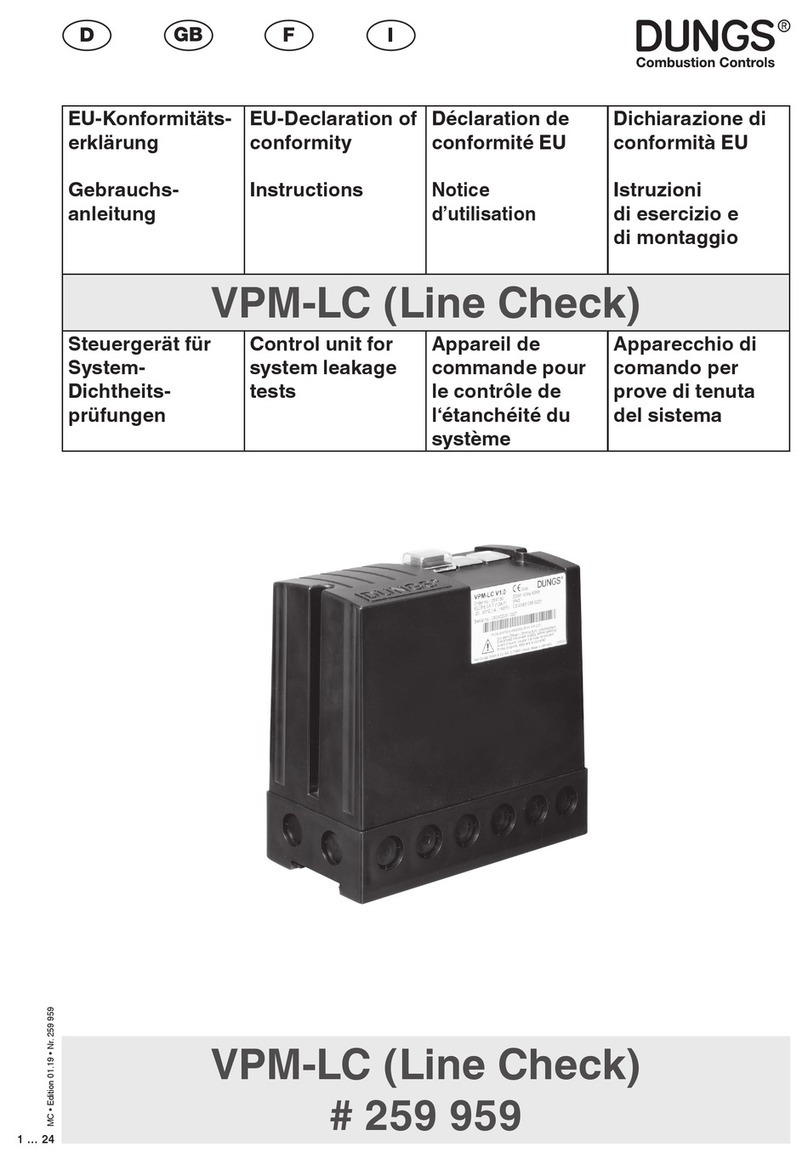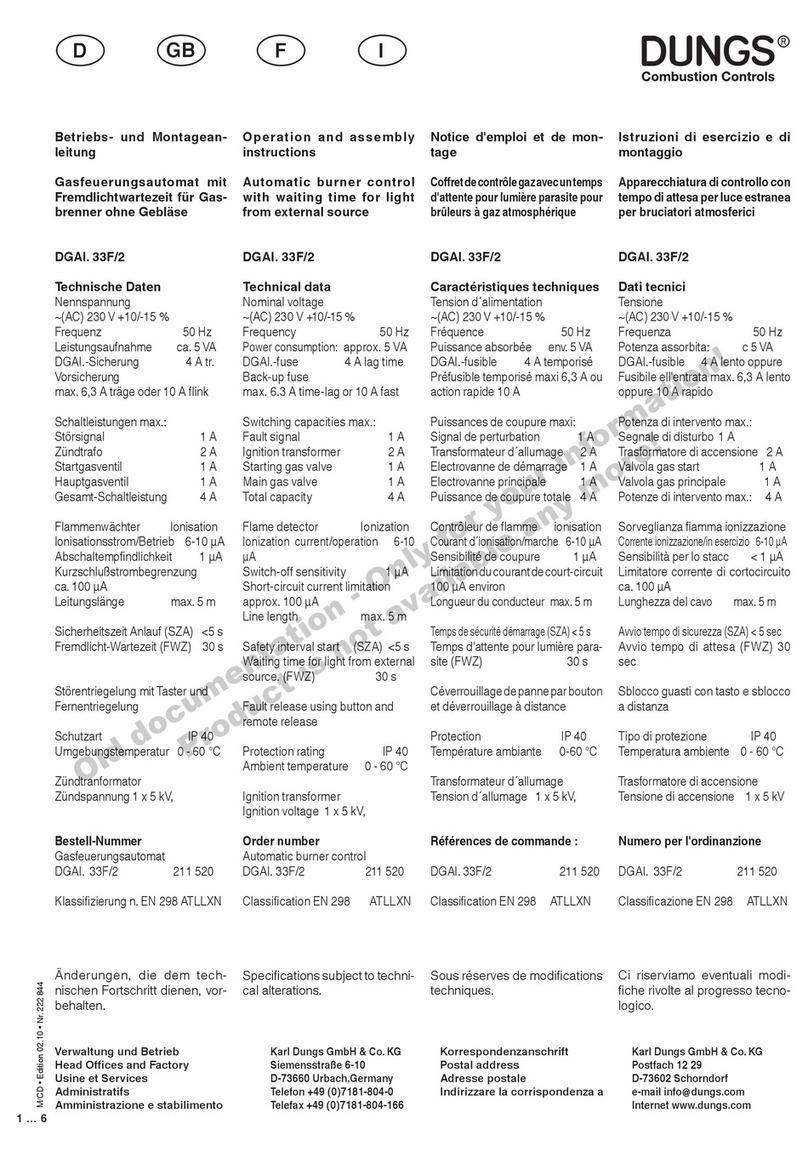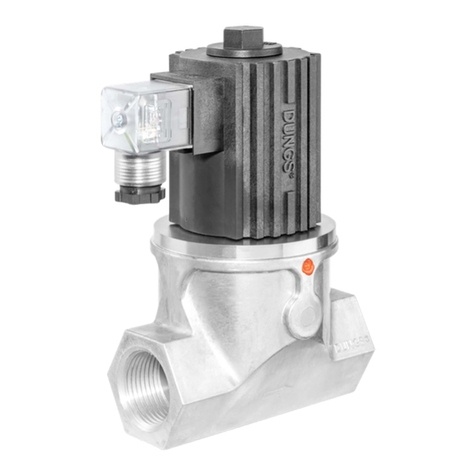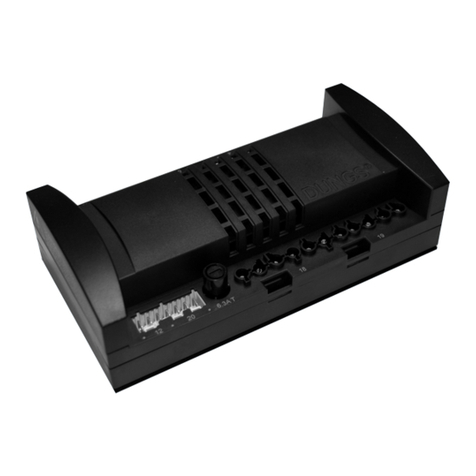7. Function
The pressure regulator’s function is to keep the outlet
pressure largely constant, independent of changes in the
inlet pressure and/or in the ow volume. In the depressur-
ised state the regulator is open. The pressure regulator
complies with the requirements of EN 334 as gas pres-
sure regulator with standard strength range (IS) and zero
ow.
Main components
A Control plate
B Inlet pressure compensation diaphragm
C Lower diaphragm shell
D Lever system
E Impulse connection for the outlet pressure
F Working diaphragm
G Vent connection
H Setpoint spring
Depressurised state
The force of the setpoint spring H acts on the working
diaphragm F. In depressurised state there is no coun-
terforce acting in the lower diaphragm shell C, since no
overpressure is applied in the outlet range. The resulting
upward movement of the working diaphragm causes the
lever system D to be pushed downwards. In this way, the
control plate A is then pulled upwards and lifted from the
seat. The regulator is open.
Steady state
In case of increasing outlet pressure, the force on the
working diaphragm F in the diaphragm shell C increases
also. The working diaphragm F is thus pushed upwards
until the force of the setpoint spring His equal to that of
the outlet pressure. The upward movement of the work-
ing diaphragm F causes the lever system D to be pulled
upwards. In this way, the control plate A is then pushed
downwards and the valve gap is reduced. The ow vol-
ume decreased in this way reduces the outlet pressure
until the set nominal value (outlet pressure) is reached
again and a balance of forces at the working diaphragm F
is established.
If the outlet pressure drops, the force on the working dia-
phragm F in the lower diaphragm shell C decreases also.
The working diaphragm F is, thus, pushed downwards
until the force of the setpoint spring His equal to that of
the outlet pressure. The upward movement of the work-
ing diaphragm F causes the lever system D to be pushed
downwards. In this way, the control plate A is then pulled
upwards and the valve gap is reduced. The increased
ow volume increases the outlet pressure until the set
nominal value (outlet pressure) is reached again and a
balance of forces at the working diaphragm F is estab-
lished.
Inlet pressure compensation
Changes in the inlet pressure have no inuence on the
balance of forces. The inlet pressure is compensated by
the inlet pressure compensation diaphragm B. The inlet
pressure is then transferred in the chamber above the inlet
pressure compensation diaphragm Bthrough an opening at
the control plate A. At the control plate A, the inlet pressure
acts in the opening direction. At the inlet pressure compen-
sation diaphragm B, opposite to the control plate, the inlet
pressure acts in the closing direction. The surface of the
control plate, on which the inlet pressure acts from below,
has the same size as the admission pressure compensation
diaphragm B, on which the inlet pressure acts from above.
Therefore, both forces cancel each other. The inlet pressure
balance at the regulator is ensured.
